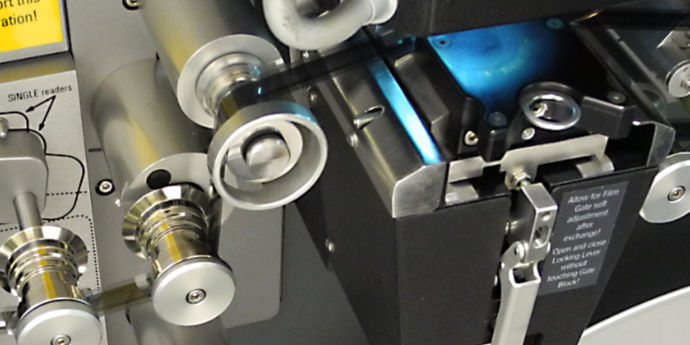In assessing these kine scans we come finally and briefly to the sound tracks. Each kine has an optical soundtrack, some are variable area, others variable density.
Optical soundtracks on 16mm film are not exactly “high fidelity” audio. The two most significant limitations on quality are:
- The frequency range. The soundtrack is recorded linearly along the edge of the film. The limitation on frequency response is the shortest wavelength which can be recorded and reproduced. When playing back an optical soundtrack on a traditional projector, the soundtrack passes over a very fine slit with a light source behind it. A detector on the other side of the film picks up the fluctuations in light intensity. The width of this slit determines the shortest wavelength which can be reproduced. It is generally accepted that 16mm optical soundtracks can reproduce frequencies up to about 6kHz.
- Film grain, dust, etc. With the audio signal effectively being recorded onto and reproduced from a very thin slice of the film, film grain becomes a source of noise. Dust and scratches cause audible clicks, pops and dropouts. Hence optical soundtracks have a poor signal to noise ratio.
Given these limitations, the soundtracks on these kines are not too bad. The scans made on the Spirit Datacine need some equalisation to boost the high frequencies in the 2kHz to 6kHz range.
Here is a sample of audio from the scan of The Magic Mirror (1961).
Audio Player